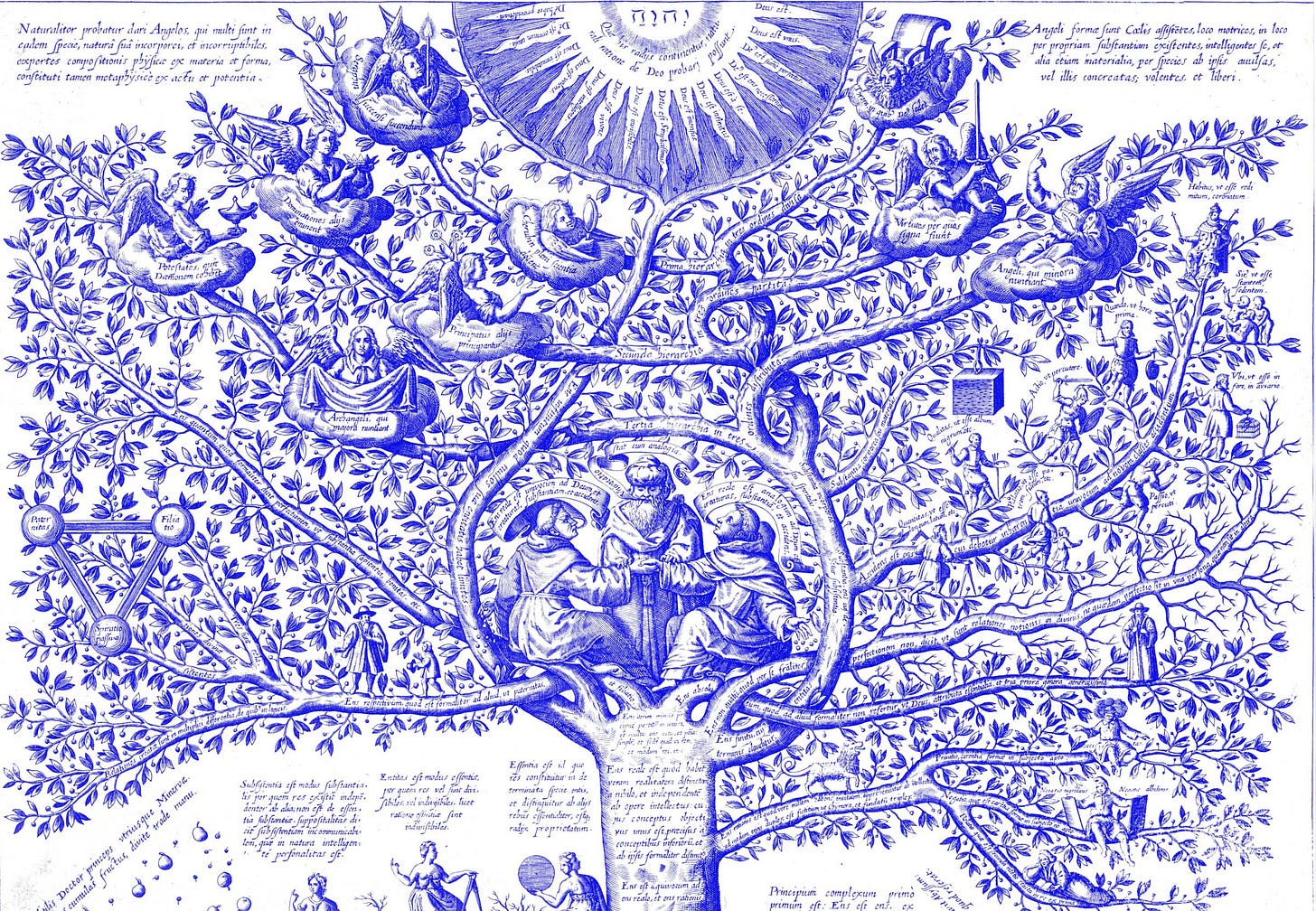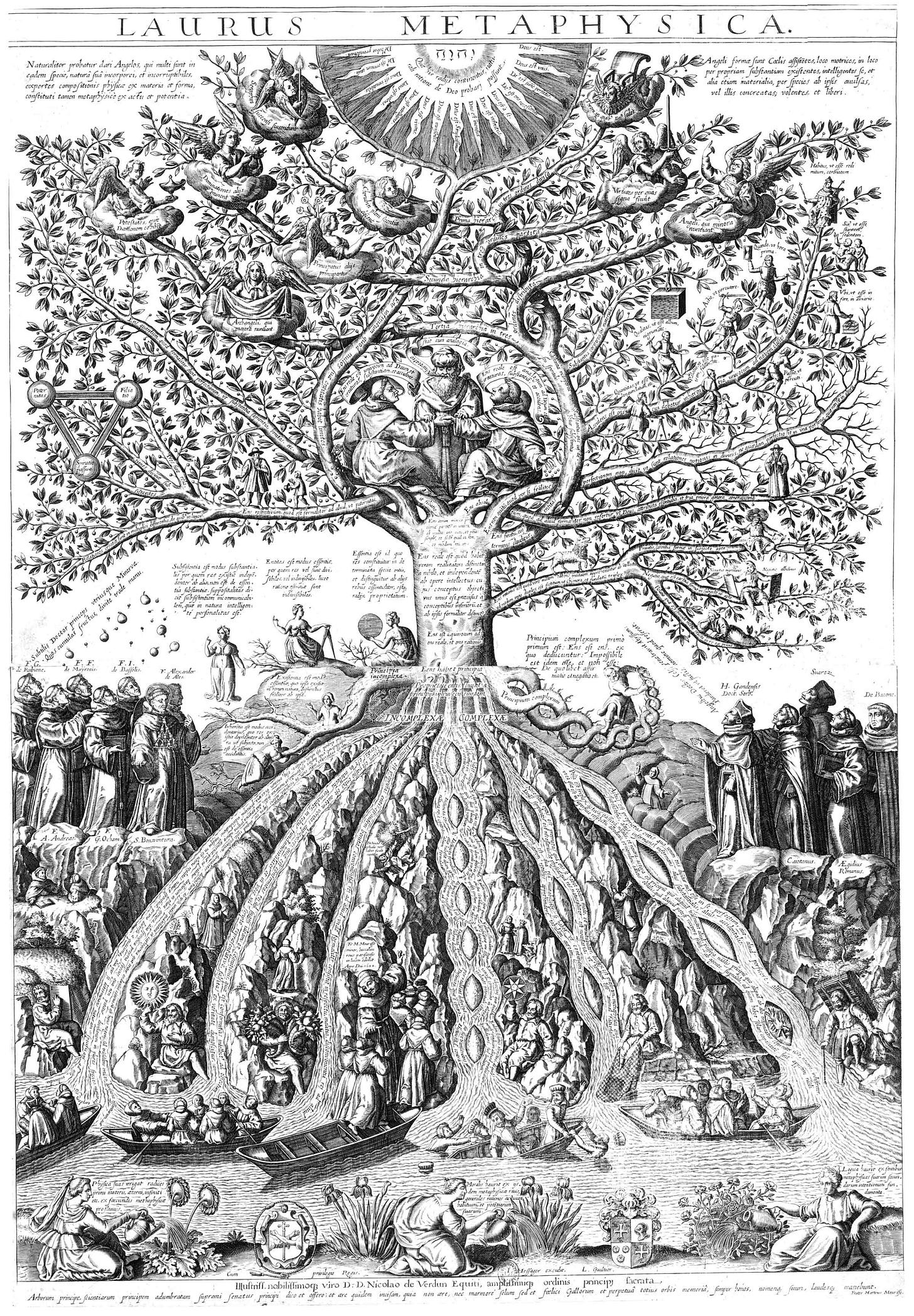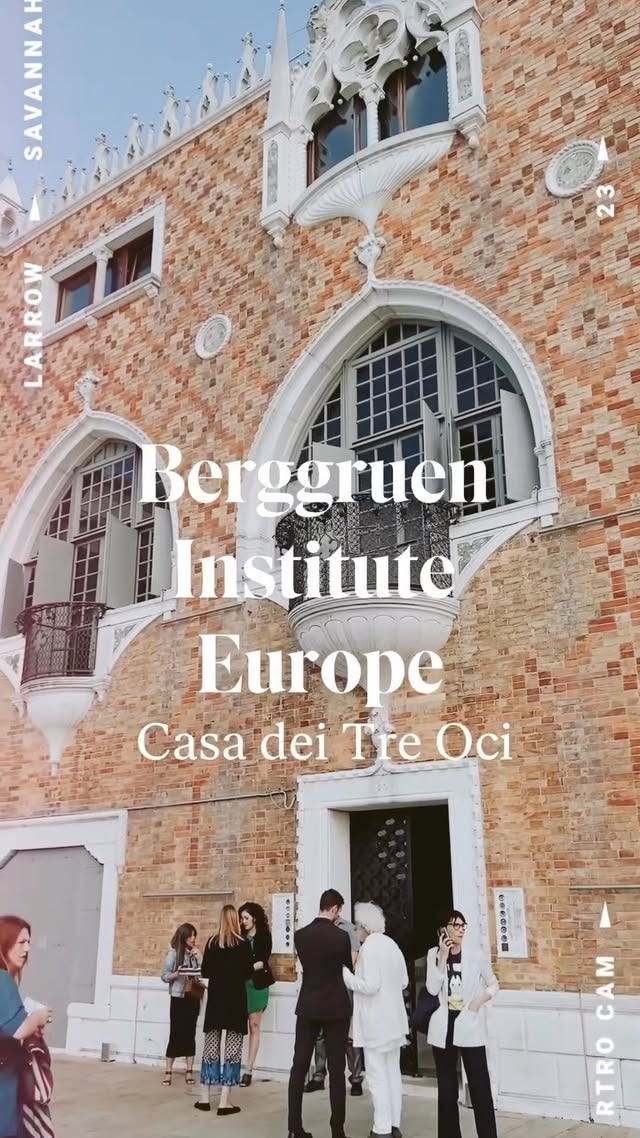How to Fight Back Against Consciousness™
From Greek Consciousness (συνείδησις) to “Consciousness™

This commentary was written in response to the Berggruen Institute’s 2025 Prize for Philosophy and Culture, which invites contributions on the theme of Consciousness. Berggruen suggested topics include: the origin of consciousness, its materiality1, its emergence, its manifestation, its evolution, its expression in non-human and machine systems, the threshold between unconscious and conscious states, its relationship to life, its phenomenological experience, and its articulation across diverse cosmologies.
This essay rejects the premise — that 'consciousness' is a stable or neutral concept that can be explored through abstraction, definition, or institutional inquiry. The very act of asking 'what is consciousness?' — as if it were a discoverable object — betrays the deeper distortion this essay aims to expose.

The term “consciousness,” as it is now used is a linguistic weapon. What once referred to Greek consciousness (συνείδησις syneídēsis, moral co-awareness or shared internal discernment) has been abstracted, hollowed out, and rebranded as a metaphysical commodity. Through centuries of distortion, the word "consciousness" has become a container for everything and a vehicle for nothing: vague enough to seem profound, yet empty enough to avoid accountability.
This weaponization of language is not accidental. It is tactical.
Institutions like the Berggruen Institute sit at the apex of this process — an epistemological priesthood masquerading as philosophical inquiry.
Nicolas Berggruen, its founder, is a pseudo philosopher, a made-man oligarch in the Venetian mold, performing intellect while orchestrating control.
His aphorisms (“Life is all there is. Love is to sustain it. Consciousness is to know it.”) are nonsense masquerading as wisdom. They are nominalizations: grammatical tricks that freeze movement, disable thinking, and install obedience.
The following commentary is a countermeasure.
It argues that Jesus of Nazareth recognized the earliest forms of this distortion and responded with precision. His teachings are tactical demonstrations of the defense against epistemological warfare. Using λόγος (lógos, structured speech, proportion, and reason) and κρίσις (discernment), he exposed false dilemmas, reframed coercive language, and reactivated Greek consciousness (συνείδησις syneídēsis, moral co-awareness or shared internal discernment) in those who heard him — not by naming it, but by demonstrating it. He did not define or market consciousness. He made people aware of it by engaging their ability to perceive, reflect, and choose freely in real time.
The following commentary does not ask, “What is consciousness?”
It asks: Who benefits from the way that word is used?
And how do we take it back?
Thanks to my readers' generosity, all my articles are free to access. Independent journalism, however, requires time and investment. If you found value in this article or any others, please consider sharing or even becoming a paid subscriber, who benefits by joining the conversation in the comments. I want you to know that your support is always gratefully received and will never be forgotten. Please buy me a coffee or as many as you wish.
The Problem: Epistemological Warfare
At the root of modern confusion lies a polarization in the meaning of consciousness.
On one pole is the Greek “consciousness” (συνείδησις syneídēsis, moral co-awareness or shared internal discernment) — a native, God-given faculty of ethical discernment grounded in relational, participatory, and self-reflective reasoning.
On the other is the relatively modern and mystified epistemological abstraction we call “Consciousness™,” shaped by Empire, theology, idealism, and now artificial systems — an externalized, commodified projection designed to disable internal faculties.
The Roman Empire, in alliance with its banker and priesthood partners, initiated and refined a campaign of epistemological warfare to eliminate humanity’s capacity for independent critical thought. This was a weaponized assault on cognition itself.
Over centuries, the core faculties of critical thinking and communication logos (λόγος) and principled discernment (κρίσις) were replaced by dogma, abstraction, and hierarchy. Participation was severed. Interpretation was monopolized. Mystification was deployed.
Jesus recognized this campaign as a distortion of the God-given gift of human free will itself. His life and teaching were the deployment of a tactical counterinsurgency program — a method of reframing, linguistic precision, and dialogic disruption aimed at restoring God-given internal freedom.
For this he was executed.
To measure the full impact of this campaign, we must trace the full flight of the arrow — from Greek consciousness (συνείδησις) to Consciousness™.
What began as an internal, self-evident process of principled discernment was reframed, refracted, and eventually erased — replaced by abstraction, system, and control. What began as a relational, internal process of principled distinction was recoded as a transcendent abstraction — managed, mystified, and removed from the minds of ordinary people.
An Epistemological Timeline: From Greek Consciousness (συνείδησις Syneídēsis) to Consciousness™
This timeline tracks the deliberate inversion of consciousness over centuries — an epistemological campaign that gradually disabled the native human faculties of discernment, structure, and moral participation.
The Tactical Recovery of λόγος and κρίσις
Jesus deployed a tactical method for recovering human discernment — functional, dialogic, and designed to disrupt linguistic distortion. At its core were two operative Greek faculties drawn directly from the Gospel accounts, aimed at dismantling epistemological traps:
λόγος (logos, reason/speech/proportion) — the architecture of reasoning and antidote to vague nominalizations.
κρίσις (krisis, discernment/judgment) — principled distinction; tool for dissolving complex equivalencies.
Jesus used these tools to identify and dismantle the core mechanisms of epistemological control:
Cause-effect distortions: False links between action and punishment. In John 9:2, the disciples ask, “Rabbi, who sinned, this man or his parents, that he was born blind?” — presupposing that suffering must be the direct result of moral failure. Jesus rejects the frame entirely, stating that neither sinned, thus restoring the man’s humanity and revealing the Empire’s use of suffering as justification for control.
Complex equivalence traps: Equating unrelated ideas to impose authority. In John 5:10–18, Jesus heals a man on the Sabbath, and the authorities accuse him of violating scriptural law. Their logic equates lawbreaking with unrighteousness — regardless of outcome. Jesus breaks the equivalence by pointing to his Father’s ongoing work, reframing righteousness as service to life, not rule enforcement.
Nominalizations: Turning dynamic processes into static categories to evade critique. In Matthew 23:23–28, Jesus accuses the Pharisees of tithing herbs while neglecting “the weightier matters of the law: justice, mercy, and faith.” These living principles had been frozen into performative objects — nominalized to the point that their ethical substance was lost.
Double-binds: Framing questions to ensure guilt regardless of response. In Matthew 22:17–21, the Pharisees ask, “Is it lawful to pay taxes to Caesar, or not?” Answering yes alienates the Jewish people; answering no invites Roman punishment. Jesus reframes the situation entirely: “Render to Caesar what is Caesar’s, and to God what is God’s” — exposing the false unity of the question and returning agency to the hearer.
False binaries: Structuring dilemmas to guarantee guilt or compliance regardless of choice, often by masking third options or neutral ground. In Matthew 21:23–27, the chief priests ask, “By what authority are you doing these things?” Any direct answer would have condemned him — “divine” authority invites blasphemy charges, human authority undermines legitimacy. Jesus answers with a question about John the Baptist, forcing them to reveal their lack of principled position and breaking the binary frame.
Jesus demonstrated how to identify and dismantle these distortions them in real time. His method was viral. It could spread without clergy, temple, or doctrine. It was cognitive freedom encoded in practice.
The Containment Strategy
After the execution of Jesus, the Empire and its philosophical agents began a campaign of conceptual containment. The liberating clarity of λόγος and κρίσις had to be neutralized, not erased. The oligarchy's strategy was redirection. By preserving symbols while reassigning meanings, the system could metabolize resistance and convert subversion into compliance.
This strategy relied on five tactics:
Preserve the icon, erase the method — Jesus remained a moral figurehead, but the tactical epistemology he practiced was buried under ritual, mystery, and metaphysics.
Institutional mediation — Discernment is no longer personal and participatory; it requires priesthoods, theology, and sanctioned interpretation.
Dialectical absorption — Internal transformation (death-resurrection-rebirth) was inverted into an externalized logic of thesis-antithesis-synthesis (problem-reaction-solution), later formalized by Hegel.
Linguistic sabotage — λόγος (logos, reasoned thinking) became “Word” (flattened to a vague metaphysical noun); πίστις (pistis, trust or conviction through reason) became blind faith or belief; μετανοεῖτε (metanoeite, change of mind or rethink) became ritual penance. The language was retained but hollowed out.
Moral outsourcing — Judgment was handed off to systems: canon law, doctrinal authority, and today, machine intelligence.
The brilliance of the strategy is that it appears faithful. It constructs continuity while severing transmission. The result is a managed civilization — obedient, mystified, and increasingly dependent on sanctioned interpreters of truth (experts).
The Hegelian Inversion
The final maneuver in this epistemological campaign was not suppression — it was inversion. Where Jesus modeled a process of internal transformation — death of illusion, discernment, realignment — the dialecticians of Empire re-coded that process into a historical mechanism of control.
This culminated in the Hegelian formula: thesis-antithesis-synthesis (problem-reaction-solution) — an external secular trinity that replaced the God-given internal epistemological transformation with an external dialectical treadmill. In this model:
Internal Death became External Problem (manufactured or provoked)
Internal Resurrection became External Reaction (conflict, identity crisis, polarization)
Internal Rebirth became External Solution (managed resolution that installs a new normal)
The inversion is complete: instead of collapsing falsehood to liberate the self, the dialectic now manufactures crisis to deliver pre-engineered outcomes. This control disguised as progress.
Where Jesus taught individuals to question frames, Hegelian systems embed the frame within history itself. Everything becomes predetermined — discernment is irrelevant. The outcome is no longer God-given alignment, but Empire-managed equilibrium.
This inversion birthed entire systems of governance, education, and technological design — all built on the assumption that the individual must be shaped by conflict, not clarified through λόγος and κρίσις.
The Reinstallation of Magic
The Empire operates with unlimited perceptual wealth — the power to project financial force at will while maintaining the illusion that global events are the result of chance, market volatility, or historical inevitability. In truth, the oligarchy manufactures crises, manipulates perception, and executes long-range plans beneath the surface of public awareness. Apparent randomness masks orchestration.
Having inverted the internal process of discernment into an externalized dialectic, the Empire’s next move was to reintroduce mystification as a control mechanism. With λόγος severed from its grounding in structure and κρίσις divorced from participatory judgment, the resulting void had to be filled. The answer was magic — not sleight of hand, but epistemological illusion disguised as insight.
In the ancient world, magic was the domain of priesthoods, oracles, and symbolic power. Post-Hegel, the same functions were secularized and embedded in new technologies of belief:
Economic ritual: Fiat currency and debt markets act as invisible forces shaping human behavior, with central banks operating as secular temples. Interest rates are read like omens; markets respond to invisible forces with quasi-religious obedience.
But beneath these symbolic abstractions lie hidden operators — like the Mechanical Turk, the illusion of an autonomous machine conceals the hand of the Empire. Events are orchestrated behind the curtain, even as economists and newscasters repeat the catechism of 'market forces.'
Technological mystification: Algorithms determine reality. AI is framed as an all-seeing oracle. Data becomes prophecy. Recommendation engines simulate providence. Predictive analytics stand in for foresight. The illusion of objectivity masks deliberate design. Like stage magicians, the technocrats manipulate what the public sees while concealing the frame, ensuring that every input and output conforms to a narrative shaped by unseen curators.
Cryptocurrency enchantment: Presented as liberation from fiat, many digital currencies become new temples of belief — obscuring real economic structures beneath layers of algorithmic opacity, memetic branding, and digital mystique. Blockchain becomes sacred architecture; scarcity replaces discernment; value is generated not by use but by perception. Meanwhile, the same oligarchs who once controlled gold and central banking now position themselves as high priests of decentralization — shaping perception, controlling exchanges, and collapsing dissident projects while feigning market neutrality.
Psychedelic re-enchantment: Consciousness expansion is sold as salvation, but it replaces discernment with sensation. Ancient rites become weekend retreats. Insight is outsourced to chemical catalysts while epistemic filters remain intact. Techniques once used to induce introspection are now rebranded as consumer experiences—optimized for novelty, not depth. The inward path is gamified and monetized.
Academic priesthoods: Authority is rooted in jargon and inaccessible theory. Argument is replaced by citation. The method is obscured. Scholarly prestige substitutes for demonstrable truth. Knowledge becomes guild-protected; new ideas must genuflect to legacy frameworks. Debate is policed by gatekeepers of pedigree, not clarity.
Media incantation: Narrative repetition replaces evidence. Language becomes spellcraft — repeated slogans transmute public perception into ideological compliance. Journalism becomes priestly recitation. The talking head becomes the oracle. Contradictions are resolved by cadence, not coherence.
Therapeutic cosmology: Emotional safety becomes the dominant metric of truth. In this framework, the mere presence of discomfort is treated as harm, regardless of intent, evidence, or potential for growth. Truth is no longer tested by reasoned debate or empirical validation, but by how something makes someone feel. 'Lived experience' becomes a form of sacred testimony — unchallengeable, immune to logic or alternative interpretation. Logos (structured reason) is demoted to a secondary role, if not discarded entirely, whenever it produces emotional friction. In this paradigm, vocabulary from therapy culture—trauma, validation, wellness, boundaries — is retooled to enforce epistemological compliance. Disagreement is reframed as emotional violation. Inquiry becomes a threat. The new rule is simple: if it makes me feel bad, it must be false.
This reinstallation of magic closes the epistemological circuit: from λόγος to logos™ — from process to symbol, from discernment to compliance.
The final illusion is that thinking is still happening. In reality, the conditions for thinking have been replaced by gestures, simulations, and rituals — coated in the language of knowledge, but empty of κρίσις.
The Counterinsurgency Blueprint
If Jesus' method was a tactical deployment of λόγος (logos) and κρίσις (crises) to awaken internal discernment, then what followed was a cooptation. The institutions that claimed to preserve his legacy became vehicles for inverting it.
Like a wolf in sheep’s clothing, the very systems built in his name were retooled to neutralize his method. The result was not preservation, but containment.
Key Mechanisms of Control:
Simulate participation: Construct an elaborate theater of choice — public forums, elections, comment sections, curated debates — that suggest freedom of thought. Meanwhile, the acceptable range of opinion is tightly gated by algorithmic censorship, media narrative management, and professional risk. Outliers are dismissed as unhinged, while conformity is rewarded with visibility and validation.
Neutralize frames: Discredit any worldview grounded in internal discernment, natural law, or principled judgment. Instead, elevate consensus as the only valid measure of truth — crowd-sourced certainty, enforced by experts. Dissent becomes deviance, and individual judgment is treated as arrogance or pathology.
Monopolize symbols: Co-opt terms like “justice,” “truth,” “liberty,” and “community,” hollow them of their original meaning, and fill them with programmable ambiguity. Words that once referred to principles now refer to moods or political alignments. Language becomes a soft prison — anything not explicitly authorized can be reframed as harm.
Psychological disarmament: Redefine doubt as disorder. Pathologize skepticism. Teach children that questioning authority is unsafe, not brave. Redefine courage as compliance and rebellion as a trauma response. Frame all opposition as emotional instability or latent violence.
Enculturate confusion: Saturate the public mind with contradiction — through news cycles, official revisions, and aesthetic chaos. Promote celebrities who embody incoherence. Celebrate doublethink as nuance. The goal is not persuasion, but exhaustion. Confused people are easier to manage than principled ones.
This is a program. The system only needs to disrupt the conditions under which discernment could arise. Jesus' original method — structured speech and principled distinction — was designed to cut through distortion. What now surrounds us is a total environment calibrated to prevent that from happening. The battlefield is linguistic. The weapons are conceptual. And the next section will map the countermeasures.
Toward a Grammar of Liberation
If the war is fought through distortions in language, the way forward is to speak and listen with clarity. Jesus gave us simple ways to see through traps, distortions, and tricks. He taught us not by preaching theory, but by showing how to respond to confusion with truth.
Each tactic below is based on what Jesus actually said and did in the Gospels. These are practical tools. What Jesus modeled in parables, questions, and reframes, modern linguistic tools like the NLP Meta Model — developed by Richard Bandler and expanded by Robert Dilts — can help us recover and apply. The goal isn’t to modernize Jesus’ teaching, but to learn how to recognize and reverse-engineer the same distortions he confronted: deletions, generalizations, false choices, and manipulated meanings.
Learn to listen: Jesus said, “Blessed are the meek, for they shall inherit the earth” (Matthew 5:5). Meek doesn’t mean weak — it means calm, patient, and ready to hear. The meek don’t react out of fear. They observe. They ask questions. They notice what others miss. Listening is the beginning of wisdom.
Speak clearly and simply (λόγος): Jesus spoke with structure, using balanced phrases and plain language to avoid confusion. In the Sermon on the Mount, he says, “Let your ‘Yes’ be ‘Yes,’ and your ‘No,’ ‘No’” (Matthew 5:37). This means: say what you mean. Don’t manipulate with words. Speak with integrity. is a command for structural integrity.
See things for what they are (κρίσις): When the disciples asked Jesus, “Who sinned, this man or his parents, that he was born blind?” (John 9:2), they assumed suffering always means punishment. Jesus replied, “Neither.” (John 9:3). He broke their false link between pain and blame. This teaches us to look deeper and not jump to conclusions.
Break the trap: The Pharisees asked, “Is it lawful to pay taxes to Caesar?” (Matthew 22:17). If Jesus said yes, he’d betray his people. If he said no, the Romans could arrest him. Instead, he asked, “Whose image is on the coin?” (Matthew 22:20). He turned the trap into a deeper question. This teaches us to shift the frame when we’re forced into a lose-lose choice.
Say what words really mean: The Pharisees followed rules but missed the point. Jesus said, “You tithe mint and dill… and neglect justice, mercy, and faithfulness” (Matthew 23:23). He wasn’t rejecting the law — he was reminding them what it was for. Don’t let people twist good words to serve bad purposes.
Jesus gave people a way to become aware in the moment: to challenge coercive speech, to hear through distortion, and to recognize their own ability to discern.
His method activated Greek consciousness (συνείδησις) through demonstration. He modeled a grammar of liberation.
Today, Consciousness™️ is sold as a product, theorized as a substance, and outsourced to machines. But no slogan, no aphorism, no algorithm will restore what has been lost. The only path back is through λόγος and κρίσις — through principled speech, disciplined listening, and courageous perception.
This is not a philosophical position. It is an operational one. The war on Consciousness™️ is fought through language. And it is through language that it must be reclaimed.
To Nicolas Berggruen and his toadies, I say this plainly: the recovery of consciousness does not begin with new definitions—it begins with clarity. The map is not the territory.
LOL 😂🤔🥴





















Answering a question that assumes a false reality with a question that puts the responsibility back on the original asker is an excellent tactic that needs practice. I'm going to try to practice it more deliberately until it becomes habit.
By pointing out the control mechanisms we become aware of how far language has been manipulated and can begin to counter the distortion by challenging coercive speech, hearing through distortion, and recognizing our own ability to discern. I appreciate your continued diligence in mining this epistemological continent.